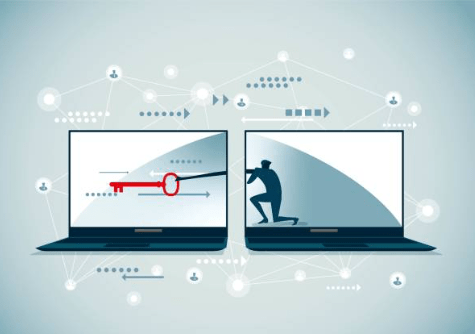Anti-forensics is a term used in digital forensics to describe the techniques hackers use to erase or hide traces of cybercrime evidence to avoid being detected by investigators. A forensic examiner needs to know these techniques to search for evidence, identify manipulations, and ensure the integrity of digital evidence. The following blog post discusses some common methods of anti-forensics and possible investigative approaches that can be used to overcome these obstructions.
General Anti-Forensics Techniques:
Data Wipe and Secure Delete
- What It Is: Data wiping is the permanent deletion of files and overwrite with random data to render recovery impossible. Tools such as Eraser, CCleaner, and Darik’s Boot and Nuke (DBAN) are designed to overwrite data, making it nearly impossible to recover.
- Countermeasures: Low-level disk scanning and residual data recovery methods are used against areas the attacker might have failed to find, such as file slack space, swap files, and temporary files, which contain remnants of deleted data.
Encryption and Obfuscation
- What It Is: The attacker could encrypt files or an entire storage volume so that the data is inaccessible without the encryption key. Obfuscation takes place through altering the data to disguise its actual form without encrypting it. Steganography is an example of how to obfuscate data that is hidden within image or audio files.
- Countermeasures: Most forensic teams use password-cracking techniques, decryption tools, and traffic analysis to isolate encrypted files. Advanced steganalysis tools and some image-processing techniques are also used to find hidden data within pictures or media files.
File Fragmentation and Data Splitting
- What It Is: Fragmentation and file splitting is the operation of breaking a big amount of data into tiny pieces and storing them within different locations on a drive, making it hard to regain access to the original file.
- Countermeasures: Advanced file carving techniques, including signature-based carving and content-based reconstruction, help to recover destroyed files. Other algorithms especially designed to recognize separated files in recognizable patterns are also utilized by investigators.

Log Manipulation and Timestamps Alteration
- What It Is: Hackers also modify the system log and timestamp to modify the sequence of events or to remove traces of the activities. There are tools like Timestomp that can change the metadata of a file, which may prevent it from being traced by forensic analysis.
- Countermeasures: The access logs, network logs, and history of metadata are drawn for validity analysis that undergo cross-verification in various system logs. Metadata analysis of other devices can also help in checking inconsistencies.
Malware Anti-Forensics
- What Is It: Some attackers use malware specially programmed for the erasure or corruption of forensic data. Examples include wipers that remove data from hard drives and self-destructive Trojans, which are set to be activated only under special circumstances. Then, evidence disappears.
- Countermeasures: When properly encoded, there are methods such as malware analysis tools and a sandbox environment, where an investigator can observe malware in a safe manner. Backup snapshots and the incremental storage images guarantee access by the forensic team to unaffected copies of the compromised system.
Covert Channels and Network Obfuscation
- What It Is: Malware that hides channels for communication within valid traffic to prevent detection. Methods used include tunneling protocols or DNS exfiltration of data while passing into and out of networks undetected.
- Countermeasures: Monitoring of network traffic, deep packet inspection, and IDS aids in detecting aberrant behavior in the network. Forensic analysis of the network metadata, including correlation with device logs, helps identify hidden communication channels.
Virtual Machines (VMs) and Anti-Forensics Containers
- What It Is: Threat actors may sometimes turn to using virtual machines or even encrypted containers in an attempt to make the activity isolated and harder to track back to the host.
- Countermeasures: Investigators can count on memory forensics to obtain and then analyze data in RAM, where traces of virtual environments and containerized activities can be embedded. Hypervisor forensics also assists in the analysis of the virtual machine’s data.
Disk Shadowing and Alternate Data Streams (ADS)
- What It Does: It provides alternative data streams in NTFS file systems that can be used to hide data or shadow volumes for the creation of hidden backups, thus giving an avenue for the masking of malicious activities or secret storage of illicit files.
- Countermeasures: Forensic tools like EnCase and FTK Imager can identify alternate data streams, while Volume Shadow Copy analysis gives the investigator access to shadow data that are generally very well-hidden. It can also unhide files on Windows-based systems, which an attacker may try to hide there.
Advanced tools and techniques to counter anti forensic techniques:
- Comprehensive Data Recovery: Examiners employ advanced recovery software to concentrate on parts of storage more likely to be untouched or less prone to overwriting. Deep forensic imaging and similar techniques enable investigators to create in-depth copies of storage media, thus improving the effectiveness of data recovery.
- Timeline Analysis: Investigators, in using metadata, often create events that lead to a time stamp and are recognized as inconsistent to point to a tampering event. This is how these have been found in terms of manipulated time stamps and altered log entries.
- Memory Forensics: RAM memory may contain data even after it has been deleted on storage. Investigators acquire evidence from an operating system, such as virtual environment evidence, active processes, and encryption keys in the residual traces of activity.
- Machine Learning and AI for Pattern Recognition: Advances in forensic engineering are being applied through machine learning algorithms, which identify the patterns of obfuscation or discover anomalies from data. The approach will help minimize time sifting through large datasets.
- Collaboration and Cross-Referencing: Working with teams in different departments, like cybersecurity and IT, for instance, allows forensic teams to gather and analyze data across various systems to neutralize efforts at obfuscation, building up a picture of how the attacker was operating.
Digi9 offers forensic expert services that help organizations break through anti-forensics techniques. Our team uses the latest tools and methodologies to uncover hidden manipulation, recover data tampering, and ensure everything is safely stored as a piece of evidence. Have confidence in the experience at Digi9 while we show you our commitment to integrity and robust support for thorough digital investigations.
Conclusion
Anti-forensics techniques pose an immense threat in digital forensics, but investigators are constantly innovating new methods to thwart such evasive techniques. Forensic teams can safely analyze data, rescue hidden data, and provide justice by overcoming attackers if they keep abreast of the most updated anti-forensics techniques and use advanced forensic tools and techniques. The war is dynamic, and the current need for learning and adaptation applies in this new battlefield dubbed digital forensic.







